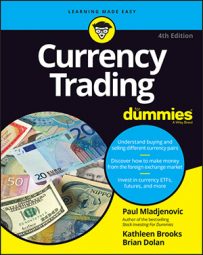A breakout or break refers to a price movement that moves beyond, or breaks out of, recent established trading ranges or price patterns captured with trend lines. Breakouts can occur in all time frames, from weeks and days on down to hours and minutes. The longer the time frame, the more significant the breakout in terms of the overall expected price movement that follows.
In the very short term, prices on a 15-minute chart may establish a trading range of 20 to 30 pips over several hours, for example. A breakout on such a short time scale might result in a 30- to 50-pip movement in a matter of minutes/hours. Daily trading ranges of 300 to 400 pips may see a breakout result in an initial 50- to 150-pip movement in subsequent hours, with more to come in following sessions.
There’s no real fixed ratio or scale for range breakouts; these examples give you an idea of the relative scales involved. To be sure, a breakout of a 15-minute range can lead to the break of an hourly range, which can lead to a breakout of a daily range.
Breakouts are important because they represent a shift in market thinking. Most trading theories start with the premise that the current price reflects all the known information on that market at the moment. But rather than settling on one price and stopping, markets tend to consolidate into a zone of prices, or a range, where relatively minor price fluctuations are simply noise in terms of the grand theories of market price behavior.
For a range to break, then, by definition something must have changed in the market’s thinking. And there’s only one thing that will change the market’s thinking: new information. New information can be anything from news and data to rumors or comments, down to the prices themselves.
Many traders rely on price information as their primary source of decision-making information. If prices in USD/CHF have been capped by 1.0500 for the past four weeks, a price move above that level is new information and requires adjustments in the market.
The beauty of breakouts from an individual trader’s perspective is that you don’t necessarily need to know the reason for the breakout — just that prices have broken out. Of course, being aware of what’s going on and what news is driving the market always helps give you a leg up in anticipating and preparing for potential breakouts.
In terms of entering a position, breakouts frequently represent important signals to get in or out of positions. In that sense, they take a lot of the guesswork out of deciding where to enter or exit a position.

